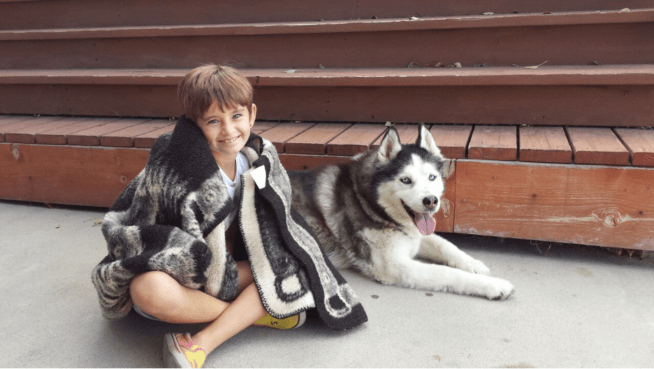Can we really help someone find the place they belong? A recent family experience allowed me to think deeper on this topic. Let me explain. It began when a dog followed my wife home during one of her weekend runs.
Meet Issy-belle
At the time, our 7-year-old daughter was so excited to keep the dog for her own. So what did she do? The first thing she did was look to claim ownership. So she renamed the dog Issy-belle and began to care for the animal. Meeting all the dog’s needs (water, food, activity); her imagination ran wild thinking about all the things she and Issy could do together in the future. She was happy for she had always wanted a dog of her own.
In examining the dog. It was well cared for, but it had been out on its own for a while, and was evident Issy was hungry, thirsty, and exhausted. After several bowls of water and a little food (thanks to our neighbor, for we had no dog food), our new dog friend collapsed into a deep sleep on our back-yard patio. Issy was at peace for the moment.

What can we do to help others find themselves in a place they don’t belong?
Most of us wouldn’t need to think about it very long. We would meet the immediate need and then work on how to help them find where they do belong.
Meeting the immediate need
Once we had met the physical and emotional needs of Issy the best we could, my wife and I thought about what to do. All three of us agreed that the underlying principle was that no matter what we wanted the best for Issy.
Returning a lost team member
Our first step was to contact our local animal center to see if they could help. Fortunately, Issy’s owners had contacted the center already so we quickly found the rightful owners. Yeah!
The owners were so happy. Subsequently, we discovered that Issy’s real name was actually Max and that he had a great family that missed him. No surprise that he was well-loved and we were part of the happy reunion seeing Max returned to where he belonged.
Unpacking how practicing servant leadership helps
1) Showing empathy through Engaging them on their terms)
We recognized that Max had a real problem and needed help to be successful. Feeling empathetic to his plight, we tried to see what would be best for him; not us. Once his immediate needs were met, we began thinking about what he would need longer-term.
2) Building a safe place by becoming a safe place
We wanted Max to feel everything would be okay soon. We worked to make him understand that we would help him on his journey home. By making our house a safe place we modeled what it means to care.
3) Leading sacrificially because it isn’t about us
We took off our own resources to provide for him in the short time he was with us. Next, we set in motion the course of events that led to Max’s safe return to his family. We wish Max a long happy life!
 Eric Peterson currently serves as technical program manager for a Fortune 500 Financial Services Company in Denver, Colorado. In addition to his job, he volunteered to form a team that employed servant leadership principles to architect a sustainable model supporting 730 employees. The community encourages staff driven initiatives in areas that include innovation, fellowship, and personal development. He earned a BS in Finance from the University of Nebraska and a MA from Webster University in Information Technology and Resource Management. He is a values-centered leader that equips people to lead more effectively through employing servant leadership principles. He also writes a weekly blog on leadership and team building found at www.shepherdingheart.com.
Eric Peterson currently serves as technical program manager for a Fortune 500 Financial Services Company in Denver, Colorado. In addition to his job, he volunteered to form a team that employed servant leadership principles to architect a sustainable model supporting 730 employees. The community encourages staff driven initiatives in areas that include innovation, fellowship, and personal development. He earned a BS in Finance from the University of Nebraska and a MA from Webster University in Information Technology and Resource Management. He is a values-centered leader that equips people to lead more effectively through employing servant leadership principles. He also writes a weekly blog on leadership and team building found at www.shepherdingheart.com.
Image courtesy of Helena Lopes.












